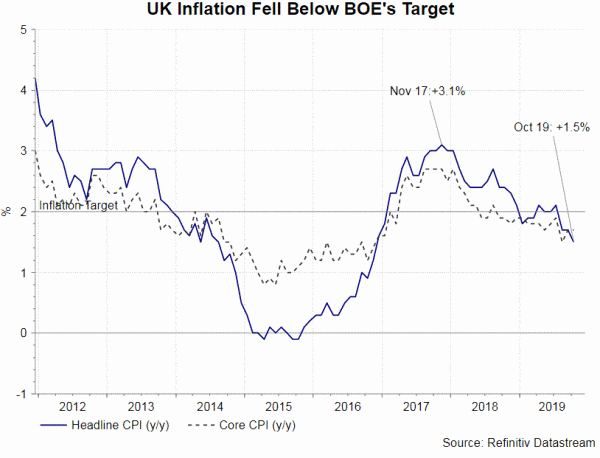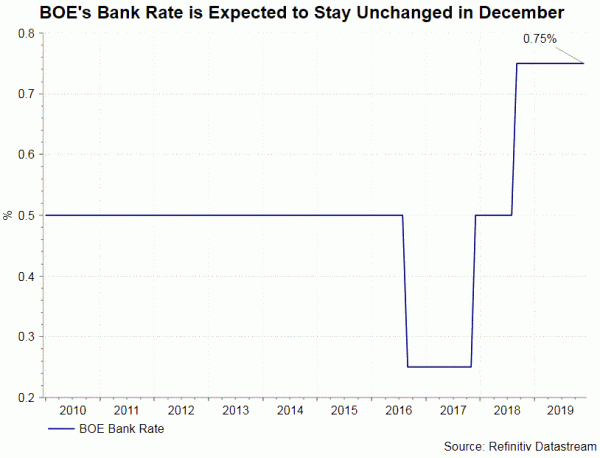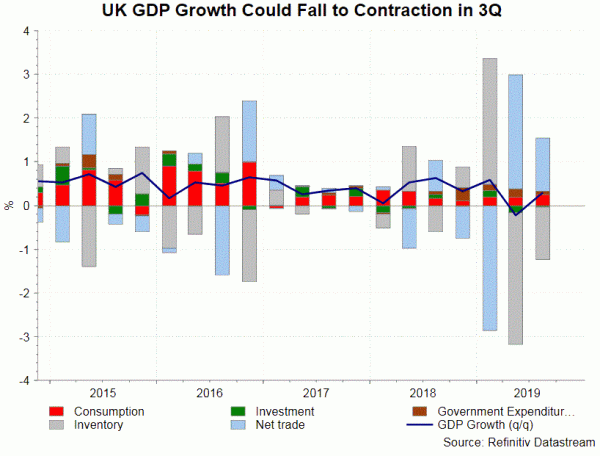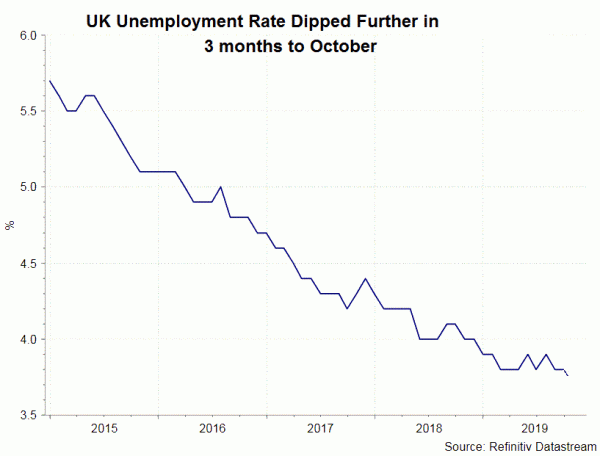BOE will likely leave the Bank rate unchanged at 0.75% this week. There will be no press conference or inflation report accompanying the meeting. However, it will be interesting to see if the members adjust its tone after UK elections. We expect the central bank to skew to the slightly dovish side, from neutral, at the meeting. Downside surprise in the data flow suggests that some more members could support a rate cut. Meanwhile, Conservatives’ landslide victory at the elections has lifted British pound, further reducing inflation pressure and offering more room for BOE to act.
Flash PMI readings show that activities in both manufacturing and services weakened further in December. The composite index dropped -0.8 point to 48.5, the second lowest since April 2009. Services PMI fell to a 9-month low of 49 while manufacturing index slumped to 47.4, a level not seen for 4 months. The new orders sub-index, falling for 5 months in a row, as demand was dampened by Brexit uncertainty. Lackluster demand has caused jobs to be deducted for a fourth successive month. It is projected that UK’s economy might contract -0.1% in 3Q19. While confidence might be restored as Brexit uncertainty is diminished after election, IHS Markit, the agency compiling the data, warned that the “Brexit path is still littered with obstacles and the need for strong negotiation skills for a future EU agreement will be paramount to avoid this downward slide becoming the economic landscape for an extended period”.
The employment situation improved with the unemployment rate down to 3.8% in the three months to October. This marks the lowest level since 1975. However, wage growth eased to 3.5% from 3.6% previously. Headline CPI is expected to have steadied at 1.5%, while core inflation at 1.7% y/y, in November. Moderation in wage growth could lead to further deceleration in inflation.
 Against the economic backdrop, we expect some members would incline to ease the monetary policy further. In November, the members voted 7-2 to leave the policy rate unchanged. Jonathan Haskel and Michael Saunders dissented as they proposed to lower the policy rate by -25 bps. They indicated that the economy had “a modest but rising amount of spare capacity”, while “core inflation was subdued”. They added that vacancies and short-term unemployment are indicators suggesting that the “labor market was turning”. They were concerned about downside risks to the central bank’s economic projections, in light of “weaker world outlook” and “Brexit uncertainties”. We expect both to continue voting for rate cut.
Against the economic backdrop, we expect some members would incline to ease the monetary policy further. In November, the members voted 7-2 to leave the policy rate unchanged. Jonathan Haskel and Michael Saunders dissented as they proposed to lower the policy rate by -25 bps. They indicated that the economy had “a modest but rising amount of spare capacity”, while “core inflation was subdued”. They added that vacancies and short-term unemployment are indicators suggesting that the “labor market was turning”. They were concerned about downside risks to the central bank’s economic projections, in light of “weaker world outlook” and “Brexit uncertainties”. We expect both to continue voting for rate cut.















